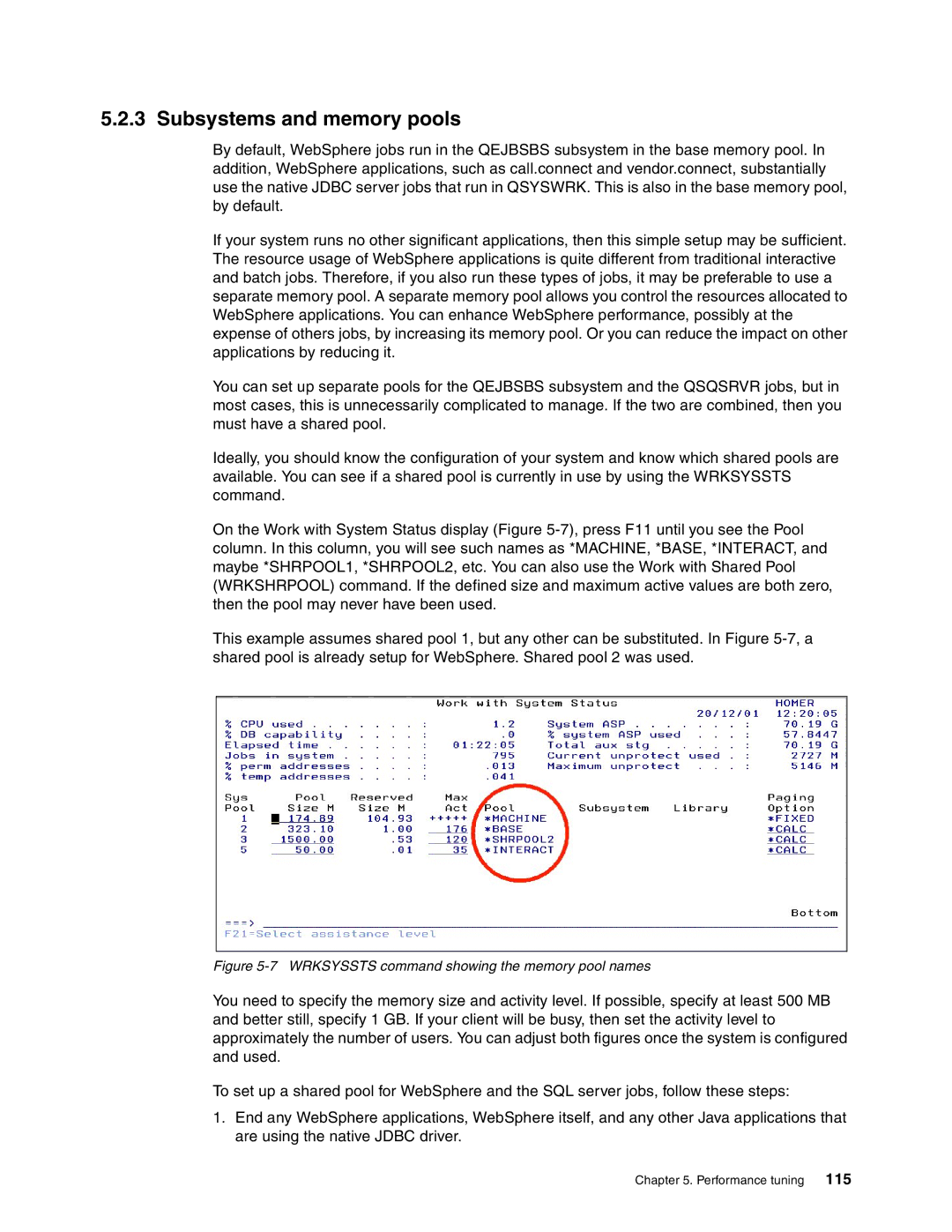
5.2.3 Subsystems and memory pools
By default, WebSphere jobs run in the QEJBSBS subsystem in the base memory pool. In addition, WebSphere applications, such as call.connect and vendor.connect, substantially use the native JDBC server jobs that run in QSYSWRK. This is also in the base memory pool, by default.
If your system runs no other significant applications, then this simple setup may be sufficient. The resource usage of WebSphere applications is quite different from traditional interactive and batch jobs. Therefore, if you also run these types of jobs, it may be preferable to use a separate memory pool. A separate memory pool allows you control the resources allocated to WebSphere applications. You can enhance WebSphere performance, possibly at the expense of others jobs, by increasing its memory pool. Or you can reduce the impact on other applications by reducing it.
You can set up separate pools for the QEJBSBS subsystem and the QSQSRVR jobs, but in most cases, this is unnecessarily complicated to manage. If the two are combined, then you must have a shared pool.
Ideally, you should know the configuration of your system and know which shared pools are available. You can see if a shared pool is currently in use by using the WRKSYSSTS command.
On the Work with System Status display (Figure
This example assumes shared pool 1, but any other can be substituted. In Figure
Figure 5-7 WRKSYSSTS command showing the memory pool names
You need to specify the memory size and activity level. If possible, specify at least 500 MB and better still, specify 1 GB. If your client will be busy, then set the activity level to approximately the number of users. You can adjust both figures once the system is configured and used.
To set up a shared pool for WebSphere and the SQL server jobs, follow these steps:
1.End any WebSphere applications, WebSphere itself, and any other Java applications that are using the native JDBC driver.
Chapter 5. Performance tuning 115
